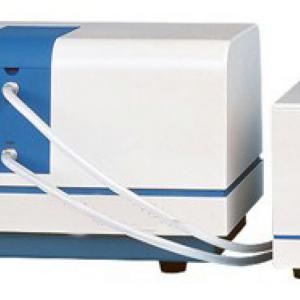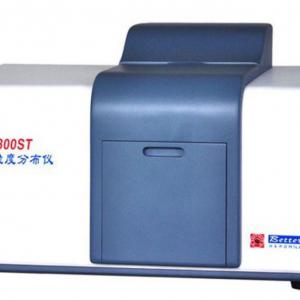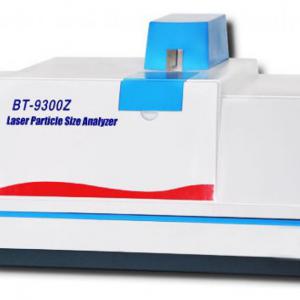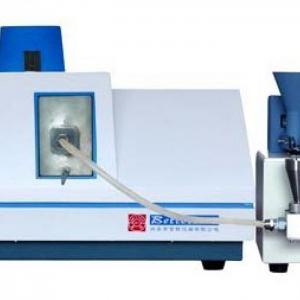BT-2900 dry image particle size and shape analysis system mainly applies to the analysis fields of particle size and particle shape of coarse and granular material. It adopts advanced hardware technology including electromagnetic vibration feeding system, high light LED array light source, imported high speed CCD, little phrase difference telecentric lens, etc. During the process of free falling of particles, shoot particle images which pass the lens randomly. Meanwhile, software quickly recognizes and processes particles, and screen displays images, particle size and particle shape data for each particle in real time. As it adopts high-speed CCD that can reach 100 frame/min, thousands of particles can be shot and processed per minute, and image process software can recognize and extract adhesive particles automatically. These technologies improve analysis speed, precision and accuracy of particle image greatly.
Principle
1. Calibration method: Shoot a picture for microscopic scale. By drawing a line in the specific scale range in this image, the actual length (um) corresponding to a pixel can be calculated. In process of analysis, the size of the particle can be calculated by counting the number of pixels it occupies.
2. Imaging principle for free falling particles: Add appropriate sample to the storage hopper. Adjust the distance between storage hopper and cloth groove. Start the vibrating feeder, and then particles will flow along the cloth groove, and fall down at the mouth of groove. When particles falling down before the camera, the camera CCD will rapidly shoot a particle image. By counting the number of particle and the total number of pixels that each particle contains, equivalent circle area and equivalent spherical volume for each particle can be calculated, so as to get the data of particle size and particle shape, etc.
Specifications
1. Size Range: 0.03-10mm
2. Lens Magnification: 0.3-2 X
3. Sample dosage: 10-200g
4. Repeatability: <3%
5. Accuracy: <1%
6. Test items: (1) particle size: Particle size distribution, typical value, maximum particle size, specific interval content, content of particles greater than or less than a certain size. (2)Particle shape: Length to diameter ratio and its distribution, circle fit and its distribution, particle image.
7. Output items: Original parameters (including sample information, test information, etc. ), analysis data (including particle size distribution, the length to diameter ratio, circle fit and typical data, etc. ), distribution pattern (e. G. Interval distribution histogram and cumulative distribution curve, etc. ).
Good repeatability
Reasons for good repeatability:
Laser, detector and signal transmission system are stable and reliable.
Stable and effective dispersing system.
High-speed sampling system keeps the instrument always in optimum condition.
Sampling rate can reach 3500 times/second, and mass data can effectively reduce the influence of repeatability caused by little abnormal data.
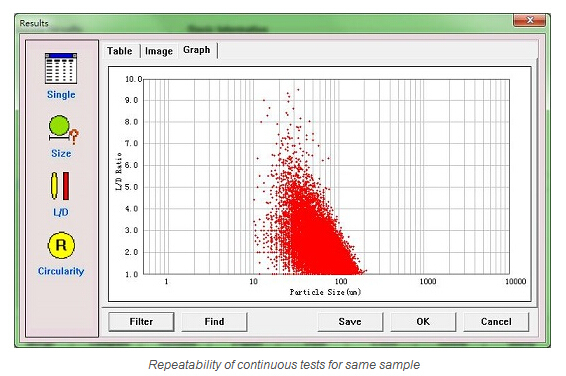
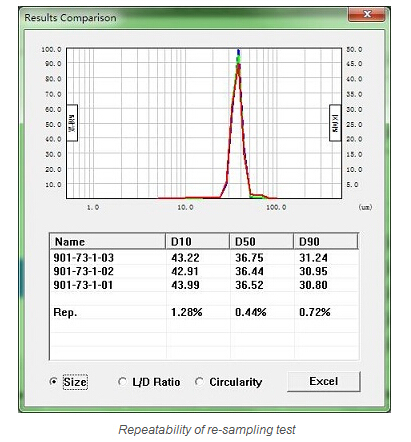
Kindly reminder:
Repeatability is primary index of particle size analyzer. It is worthless for particle size analyzer if repeatability is not good. Repeatability is related to the instrument, also, related to the operator, voltage, water quality and interference. It is a reflection of integrated factors.
Good accuracy
Reasons for good accuracy:
Adopts high speed CCD, it can shoot 100 images per second, and more than 10 thousand particles could be analyzed per minute.
Through the scale to calibrate the accuracy of the system, so analysis result is accurate and reliable
Complete sample preparation system, including functions of electromagnetic vibration feeding, "particle waterfall" formed by scattering mode of particle free falling, etc.
To filter agglomerate or adhesive particles through the function of recognizing connected particles, in order to avoid that the test result is affected.
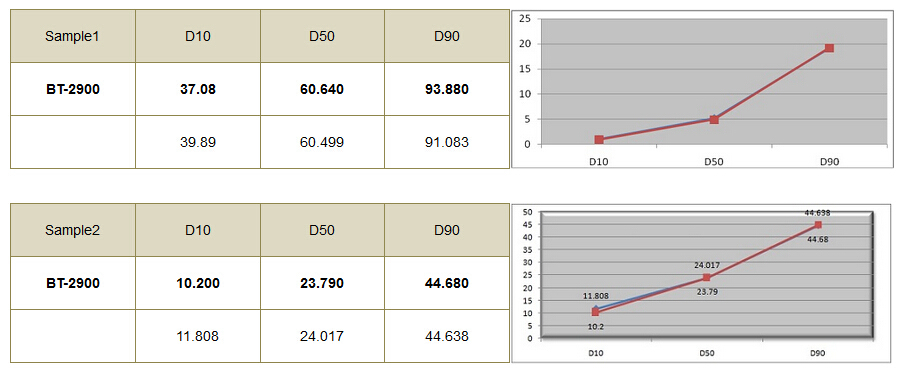
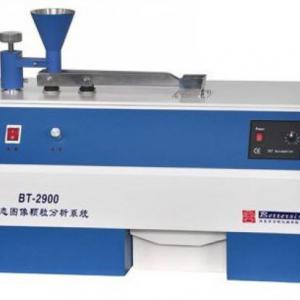
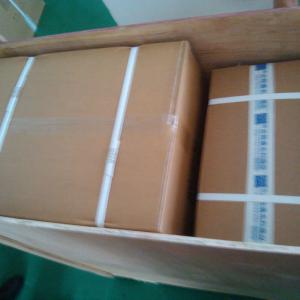
 China
China